Perfect Coronation street party recipes, from Mary Berry's ultimate scones to Tom Parker Bowles' irresistible coronation chicken
Emma Hughes collects the best Platinum Jubilee street party recipes from some of Britain's best-loved chefs and food writers.
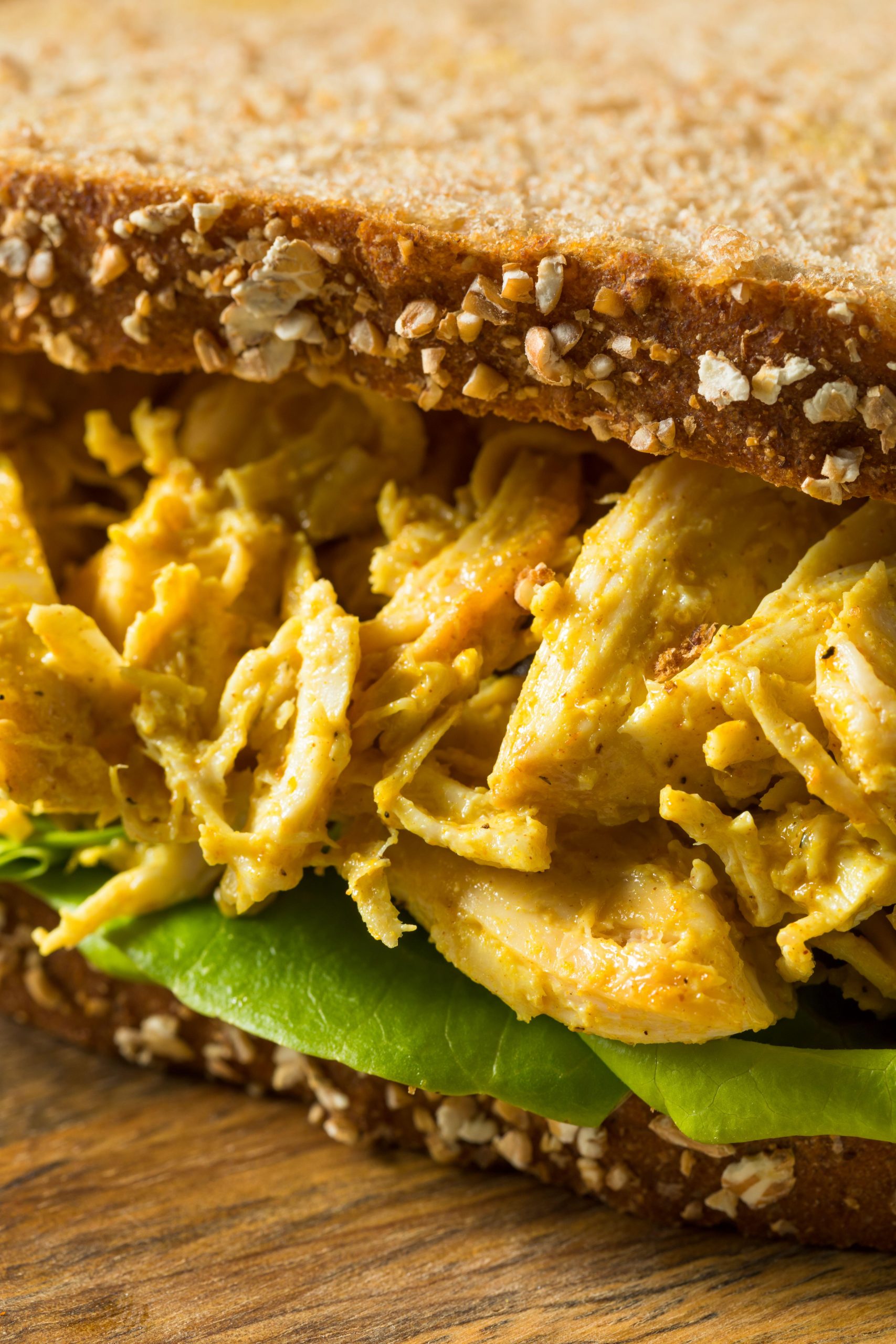
Street parties — bunting-decked, cake-laden, joyously singalong affairs — are as British as lighting the fire on a Sunday evening and saying ‘sorry’ when you mean ‘excuse me’. They were held to mark Queen Victoria’s Golden Jubilee in 1887, and (after a period on the wrong side of the law after the First World War, when they were thought to be encouraging ‘rowdiness’), they honoured George VI’s coronation in 1937, and they’ll forever be associated with the late Queen, whose coronation was marked with celebrations that were all the more moving set against the still-solemn post-war backdrop.
Heavy rain on June 2, 1953, meant that many of the ‘street’ parties took place in village halls and gymnasiums, but that didn’t deter people from laying on magnificent spreads of what the historian David Kynaston records in his book Family Britain as ‘a huge swanky tea’ of sandwiches, jellies, ice creams and blancmanges. Although the latter might raise a few eyebrows, most of the menu would be greeted as rapturously today as it was all those years ago.
Whether you’re organising a Coronation celebration or have simply volunteered to do some baking, what should you be keeping in mind? Aim for a balance of savoury and sweet, perhaps leaning towards the former with plenty of Jeremy Lee’s cheese straws; excessive sugar, bunting and small children is a combustible combination.

Serve twice as many finger sandwiches as you think you’ll need — Tom Parker Bowles’s, made to a treasured Fortnum & Mason recipe, will disappear faster than you can say ‘more tea, vicar?’
Portability is key, too: Mary Berry’s fruity scones are a cinch to transport, together with the obligatory pots of jam and clotted cream. That being said, you needn’t necessarily shy away from individual servings: Nadiya Hussain’s easy lemon syllabubs will look really lovely set out on a long table in pretty mix-and-match glasses.
Finally, don’t be afraid to put a fresh spin on classics, as Ravinder Bhogal does with her prawn toast Scotch eggs: even Coronation chicken was inspired by Jubilee Chicken, itself created for George V’s Silver Jubilee in 1935. Now, as then and in 1953, we all have much to be thankful for.
Mary Berry’s fruity scones
Scones need a light touch or they can become tough and heavy, so handle them as little as possible. Roll them out quite thickly to start with; they never rise as much as you think they will. As the dough is quite deep, dip the cutter in flour before cutting out each scone to prevent the dough from sticking to it.
Sign up for the Country Life Newsletter
Exquisite houses, the beauty of Nature, and how to get the most from your life, straight to your inbox.
Ingredients
Makes 10
- 75g butter, chilled and cut into cubes, plus extra for greasing
- 350g self-raising flour, plus extra for dusting
- 1½ tspns baking powder
- 30g caster sugar
- 75g sultanas
- 150ml milk
- 2 large eggs, beaten
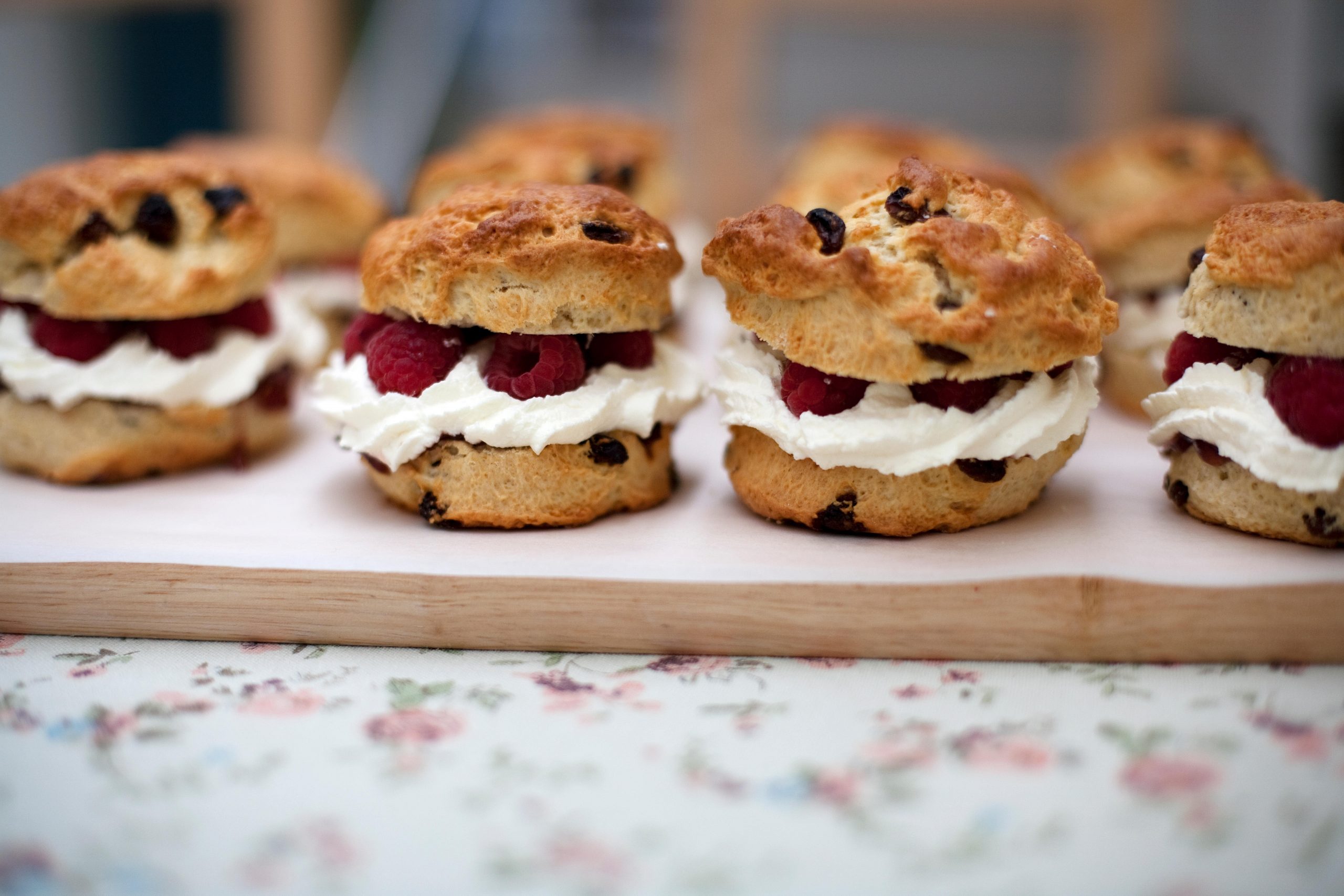
Method
Preheat the oven to 220°C/fan 200°C/425°F/gas mark 7.
Lightly grease a large baking sheet. Mix the flour, baking powder, and butter cubes, as shown below, then stir in the sugar and sultanas.
Pour 100ml of the milk and all but 2tbspns of the beaten egg into the flour mixture. Mix together with a round-bladed knife to a soft, but not too sticky dough, adding a bit more milk if needed to mop up any dry bits of mixture in the bottom of the bowl. Turn the dough out onto a lightly floured work surface, lightly knead a few times only until gathered together, then gently roll and pat out to form a rectangle about 2cm (1in) deep.
Cut out as many rounds as possible from the first rolling with a 6cm (3in) cutter (a plain cutter is easier to use than a fluted one) and lay them on the baking sheet, spaced slightly apart. Gather the trimmings, then roll and cut out again. Repeat until you have 10 scones.
Brush the tops of the scones with the reserved egg. Bake for about 10 minutes, or until risen and golden. Remove and cool on a wire rack.
From ‘Mary Berry’s Cookery Course’ (DK, £17.99)
Ravinder Bhogal’s prawn toast Scotch eggs with banana ketchup
These are the bonny love children of a Scotch egg and a prawn toast. You can use panko breadcrumbs to coat the eggs if you can’t get hold of uncooked prawn crackers. For perfectly soft-boiled quail’s eggs, start with a saucepan of cold water (enough to cover the eggs) and once it comes to the boil, slip in the eggs, simmer for 2 minutes and 15 seconds precisely, then quickly fish out the eggs with a slotted spoon and plunge into ice-cold water before shelling.
Ingredients
Makes 12
- 300g raw prawn crackers
- 300g panko breadcrumbs
- Plain flour, for dredging
- 3 eggs, beaten
- 300g raw tiger prawns, peeled and deveined
- 2 fat garlic cloves, finely chopped
- Thumb of ginger, finely grated
- 1tspn chilli flakes
- 1tspn caster sugar
- 1tspn sesame oil
- 1tspn light soy sauce
- 5 spring onions, thinly sliced
- 12 soft-boiled quail’s eggs, shelled
- Groundnut oil, for deep-frying
- Sesame seeds, to garnish
For the ketchup
- 1tbspn groundnut oil
- 1 red onion, finely chopped
- 1tspn finely grated ginger
- 3 garlic cloves, crushed
- 1 red chilli, finely chopped
- 1tspn ground cinnamon
- 1tspn ground allspice
- 2 heaped tspn Madras curry powder
- 6 ripe bananas, mashed to a puree
- 3tbspn dark-brown sugar
- 200ml cider vinegar
- 4tbspn light soy sauce
- Sea salt
Method
To make the ketchup, heat the oil in a large saucepan and fry the onion over low heat until dark and caramelised. Add the ginger, garlic and chilli and fry until soft and fragrant, then follow with the cinnamon, allspice and curry powder and fry for a few minutes until their scents fill your nose.
Now stir in the bananas, sugar, vinegar and soy sauce and let it simmer gently for 20 minutes, stirring occasionally. Pour in 125ml of water and cook for a further 5 minutes. Season with salt to taste, then blend to a smooth paste with a hand-held blender, or leave it slightly chunky — the choice is yours. Set aside to cool.
Blitz the prawn crackers to a breadcrumb consistency in a blender or food processor. Tip into a shallow bowl and mix with the breadcrumbs. Put the flour into another bowl, and the beaten egg into a third.
Pat the prawns dry with kitchen paper, then pop them into the blender or food processor. Add the garlic, ginger, chilli flakes, sugar, sesame oil and soy sauce and whizz to a coarse, sticky paste — do not over-blend. Stir in the spring onions, then divide the prawn mixture into 12 equal portions and place on a plate.
Now enclose each soft-boiled quail’s egg in a portion of the prawn mixture: with wet hands, roll the prawn mixture into a ball, then flatten it into a circle large enough to wrap around the egg. Press the edges together to seal, being careful not to squash the delicate egg inside. Once all the eggs have been wrapped, roll them in the flour, then in the beaten egg and finally in the breadcrumb mixture. Place on a plate and freeze for five minutes to firm them up slightly.
Preheat the oven to 200°C/180°C/gas mark 6 and line a baking tray with baking parchment.
Fill a large, heavy-based saucepan a third full with the deep-frying oil. Heat the oil to 180°C — if you don’t have a thermometer, you will know the oil is ready when a cube of bread turns golden brown in 20 seconds. Place the Scotch eggs in the oil in batches, being careful not to overcrowd the pan, and fry for two minutes until crisp and golden. Use a slotted spoon to transfer them to the baking tray. Allow the oil to return to temperature before repeating with the other batches.
When all the Scotch eggs have been fried, cook them in the oven for a further two minutes. Slice through the middle to check they’re done — the prawn mixture should be pink and cooked through and the egg yolk should still be runny. Serve with the banana ketchup and a sprinkling of sesame seeds.
From ‘Jikoni: Proudly Inauthentic Recipes from an Immigrant Kitchen’ by Ravinder Bhogal (£26, Bloomsbury)
Fortnum & Mason and Tom Parker Bowles’s Coronation chicken sandwiches
This version omits the original nuts and uses fresh coriander, plus plump raisins, mango chutney and a little spice to keep all that naughty sweetness in check.
Ingredients
Makes 16 finger sandwiches
- 1tbspn vegetable oil
- 1½tbspns mild curry powder
- 1tspn turmeric
- 3 cooked chicken breasts, skinned and finely diced
- 8–9tbspns good-quality mayonnaise
- 3tbspns mango chutney
- 1tbspn chopped golden raisins
- 2tbspns chopped coriander
- Salt and freshly ground black pepper
- Butter, for spreading
- 8 large slices of white bread

Method
Gently heat the vegetable oil in a small pan, add the curry powder and turmeric and cook over a very low heat for one minute, stirring constantly. Remove from the heat and cool slightly. Put the diced chicken into a bowl, add the spice mixture and rub it into the chicken. Add the mayonnaise, mango chutney and raisins and mix well. Fold in the chopped coriander and season to taste.
Lightly butter the bread and spread the Coronation chicken mixture over half the slices. Sandwich together with the remaining bread, cut the crusts off, then cut each sandwich into four fingers.
From ‘The Cook Book: Fortnum & Mason’ by Tom Parker Bowles (Fourth Estate, £30). Tom’s new book with Fortnum & Mason, ‘Time For Tea’, is out now (Fourth Estate, £20)
Nadiya Hussain’s lemon syllabub
The simplest of all recipes, this is creamy, zesty and entirely foolproof.
Ingredients
Serves 4
- 150g raspberries
- 1tspn rose extract
- A sprig of fresh lemon thyme, leaves picked
- 300ml double cream
- 50g caster sugar
- 1 lemon, zest and juice
- Sponge fingers, to serve
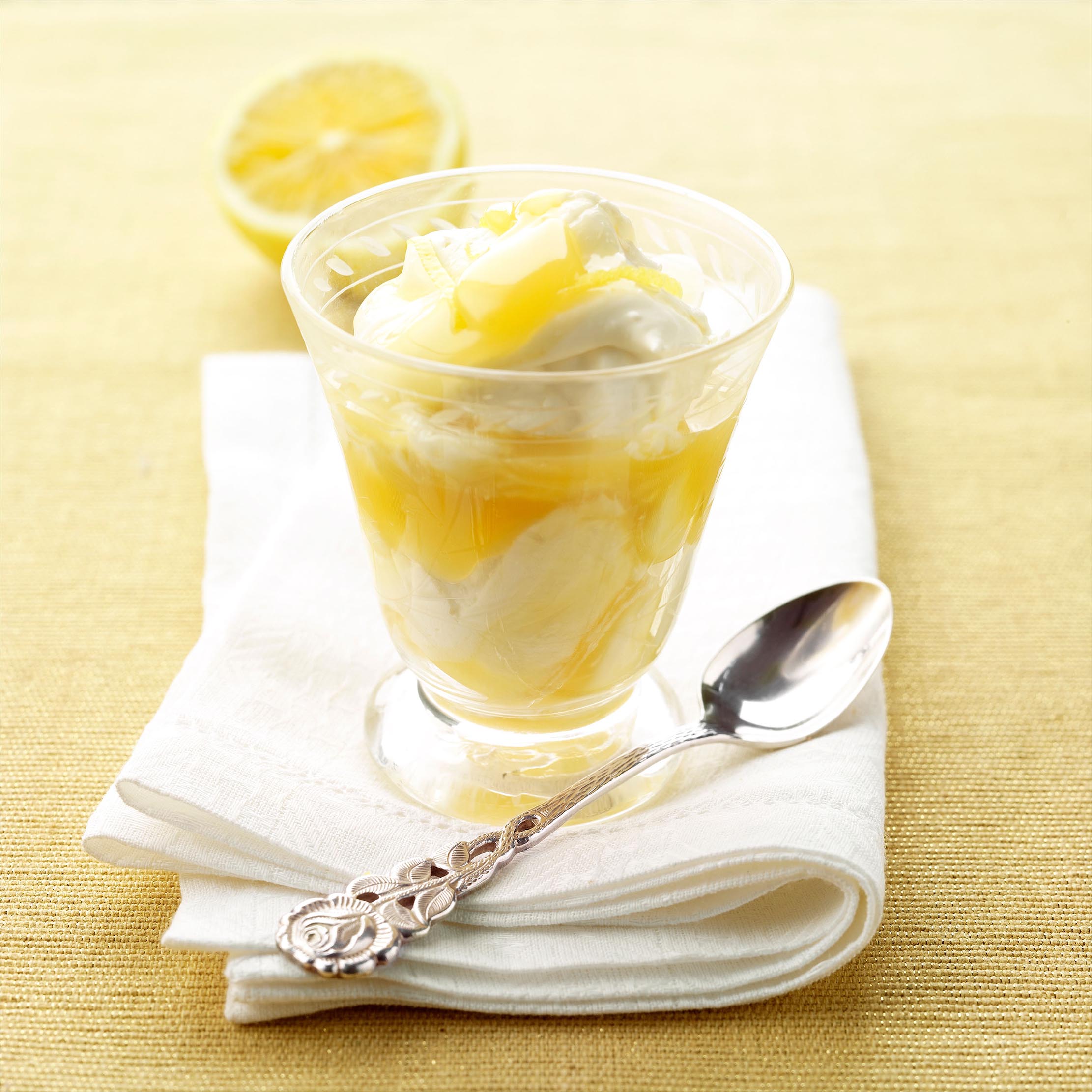
Method
Have four serving glasses ready. Mix the raspberries with the rose extract and lemon thyme leaves and mash a little to break up. Divide the mixture into the four glasses. Add the cream and sugar to a mixing bowl and whip to soft peaks. Add the lemon zest and juice and fold through. Spoon on top of the raspberries. Ideally chill for an hour before serving with sponge fingers.
From ‘Nadiya’s Fast Flavours’ by Nadiya Hussain (Michael Joseph, £22)
Jeremy Lee’s cheese straws
These golden, perfectly puffed cheese straws are extraordinarily moreish and guaranteed to delight guests of all ages. Use the best cheddar you can find.
Ingredients
Serves 6
- 400g all-butter puff pastry 400g
- 4 egg yolks
- 1 level tspn mustard powder
- A pinch of cayenne
- ¼tspn paprika
- 6 turns of the mill of black pepper
- 200g best farmhouse cheddar, coarsely grated
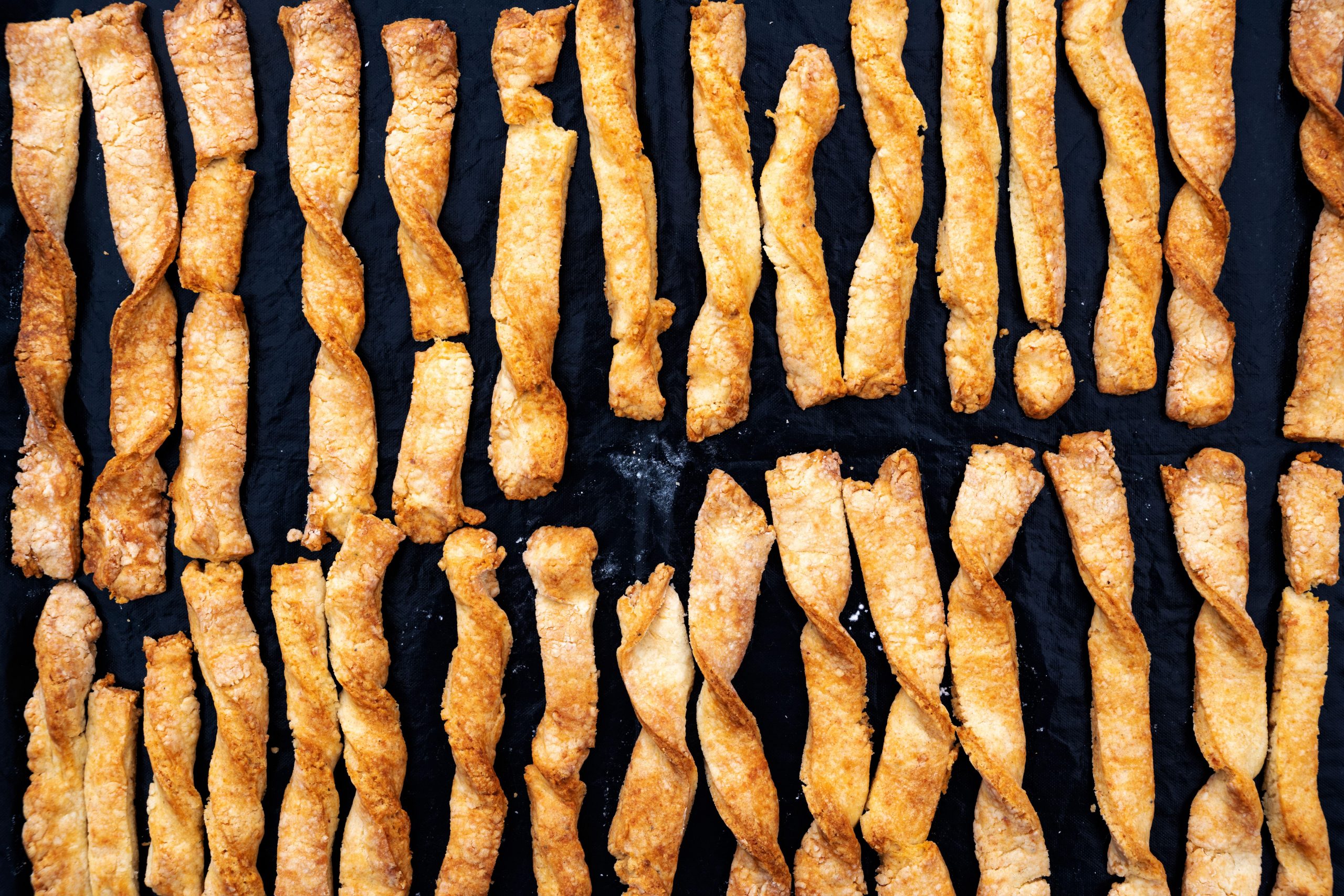
Method
Heat the oven to 200˚C fan/gas mark 7. Line two baking sheets with greaseproof paper. Roll out the pastry, so that it’s roughly 6–7mm thick, into a large rectangle (or two) and lay on a tray or board. Beat the egg yolks well, then add the mustard powder, cayenne, paprika and pepper. Brush this liberally over the pastry. Lay the cheese on top, evenly and right to the edges. Press down lightly and refrigerate for at least an hour.
Before cooking, cut the pastry sheets into 1cm-wide lengths. Lay the straws quite well apart on the prepared baking sheets and bake for 15 minutes, until golden brown. Best eaten warm.
Jeremy Lee is chef-proprietor at Quo Vadis — quovadissoho.co.uk
Richard Godwin’s Platinum Punch
The ‘flowing bowl’ would have been the centrepiece of any 18th-century royal gathering and, 300 years on, we haven’t really come up with anything better for a 21st-century street party. It’s practical as well as convivial and can be made as punchy as you like.
The punch — created for The Queen's Platinum Jubilee in 2022 — requires a little preparation the day before, but should be assembled on the day. You can easily up or minus the proportions to suit a party of any number. If you have a hard time finding Dubonnet, an Italian-style red vermouth such as Martini Rosso will make a decent substitute. You can top it up with Prosecco or Champagne if you’re in a really celebratory mood.
Ingredients
Serves 10
- Three lemons
- Three cinnamon sticks
- 75g golden caster sugar
- Water
- 400ml cold Earl Grey tea
- 250ml gin
- 250ml Dubonnet
- 250ml grapefruit juice
- Lemon, grapefruit, mint and berries to garnish
- Ice
Method
First of all, make plenty of ice. (The thoughtful host does this 24 hours before any party; bagged supermarket ice is vastly inferior.) Bear in mind that the larger the lumps, the slower they will melt and the better they will cool the punch, so freezing water in rounded bowls or plastic containers is a good solution.
Now make the sherbet. Peel the zest from all of the lemons using a vegetable peeler, being sure to extract as little of the white pith as possible. Place the strips in a saucepan with the sugar and ‘muddle’ by pressing down with a wooden spoon or similar. The idea is to combine the bitter juices from the peel with the sugar. Add about 50ml of water and the cinnamon sticks and bring the mixture to the boil, stirring until the sugar is dissolved. Leave to cool with the lid on and the cinnamon will infuse into the syrup. Strain when ready to use.
Also in advance: make a strong pot of Earl Grey tea, ideally with proper tea leaves, and allow it to cool. You can make the tea the usual way, with boiling water (although do be sure to take out the leaves after a couple of minutes to avoid stewing). But a cold brew is better. Simply leave the tea to infuse in cold water overnight or for about 12 hours.
The punch should be assembled on the day. Combine the cinnamon-lemon sherbert, gin, Dubonnet, cold tea, grapefruit juice and the juice of one of the lemons in an attractive bowl and stir. Taste for balance. You may add more lemon juice, but bear in mind, the punch should be well-rounded rather than tart. You may also feel inclined to add cold water (for dilution) or more gin (for strength), depending on the sort of party you’re envisaging.
Just before serving, add copious ice, stir until cool and decorate with a fetching combination of lemon and grapefruit slices, fresh mint and/or berries. Ladle the mixture into tea cups to serve.
Richard Godwin’s ‘The Spirits: A Guide to Modern Cocktailing’ is out now (Square Peg, £16.99)
-
 Designer's Room: A solid oak French kitchen that's been cleverly engineered to last
Designer's Room: A solid oak French kitchen that's been cleverly engineered to lastKitchen and joinery specialist Artichoke had several clever tricks to deal with the fact that natural wood expands and contracts.
By Amelia Thorpe
-
 Chocolate eggs, bunnies and the Resurrection: Country Life Quiz of the Day, April 18, 2025
Chocolate eggs, bunnies and the Resurrection: Country Life Quiz of the Day, April 18, 2025Friday's quiz is an Easter special.
By James Fisher
-
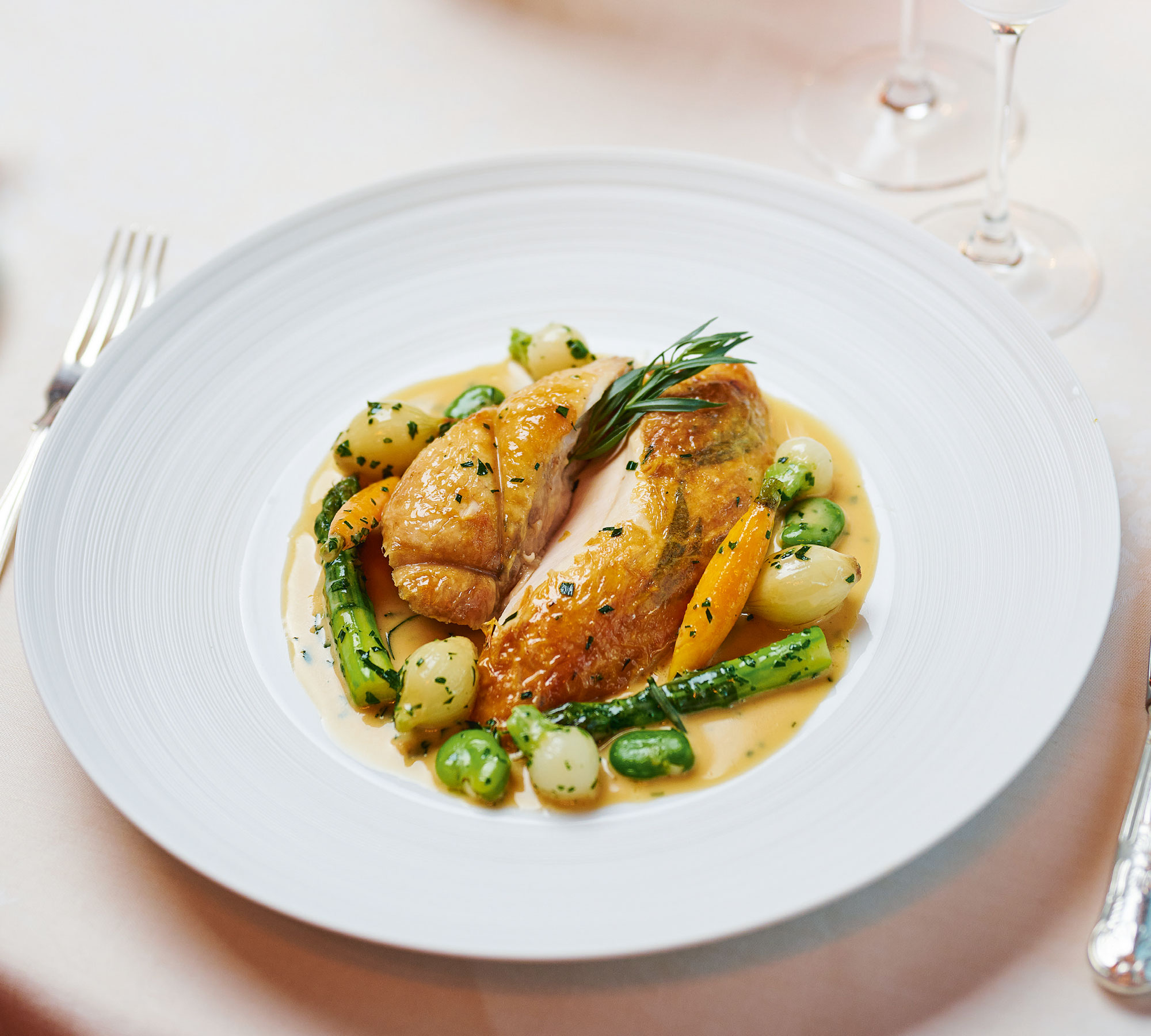 How to make The Duchess of Cornwall's favourite dish: Roast chicken with tarragon and cream
How to make The Duchess of Cornwall's favourite dish: Roast chicken with tarragon and creamJohn Williams, the revered executive chef of The Ritz, cooks The Duchess of Cornwall's favourite dish: Roast chicken with tarragon and cream.
By Country Life
-
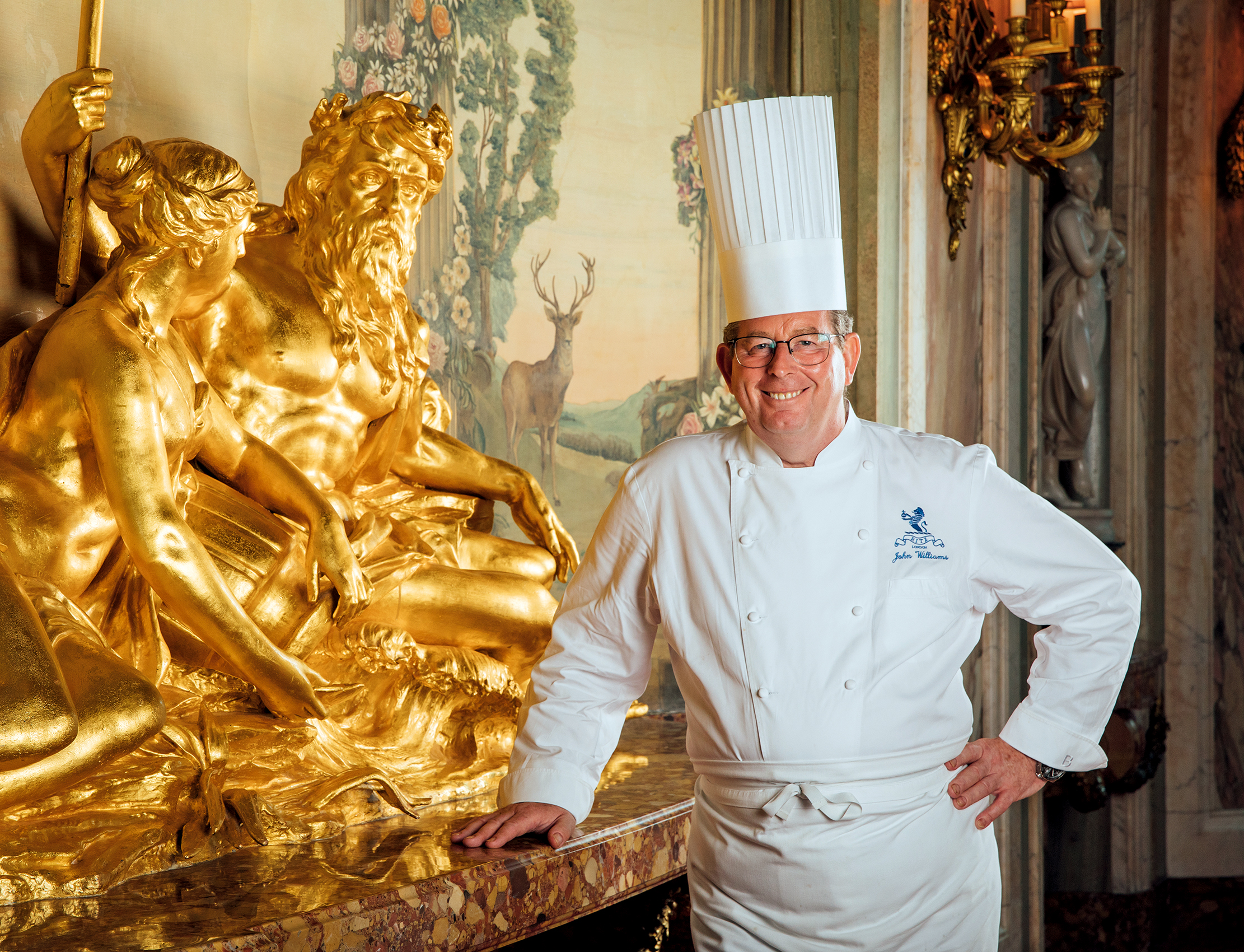 How to make Princess Anne's favourite recipe — including the special ingredient that's probably already in your cupboard
How to make Princess Anne's favourite recipe — including the special ingredient that's probably already in your cupboardHRH The Princess Royal has guest edited Country Life's 29 July 2020 issue — and one of the features covers her favourite game recipe, devilled pheasant.
By Country Life
-
 A drink for all seasons: Drinks fit for royalty, including a Duchess's gin and the Queen's top tipple
A drink for all seasons: Drinks fit for royalty, including a Duchess's gin and the Queen's top tippleIf you're part of the Royal Family, chances are you could probably use a nice, stiff drink right about now. Alexandra Fraser is here to help.
By Alexandra Fraser
-
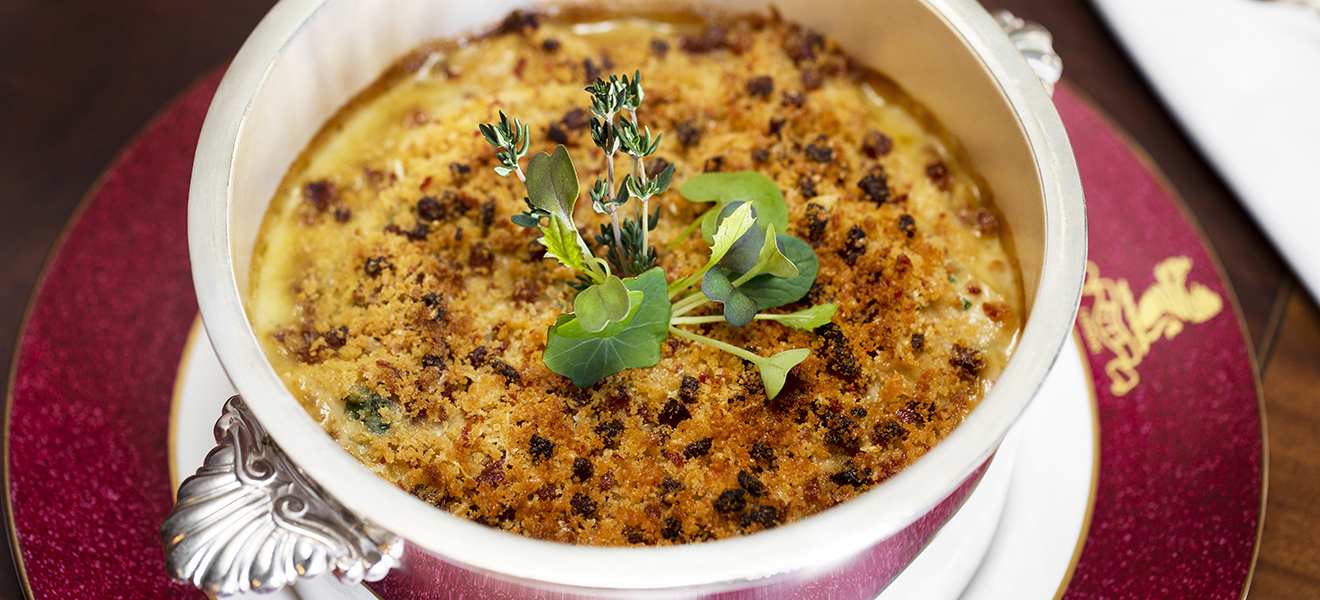 How to cook The Prince of Wales’ favourite dish: Pheasant Crumble Pie
How to cook The Prince of Wales’ favourite dish: Pheasant Crumble PieSee how to make the Prince of Wales's favourite dish, pheasant crumble pie, as demonstrated by John Williams, executive chef at The Ritz in London.
By Emma Hughes
